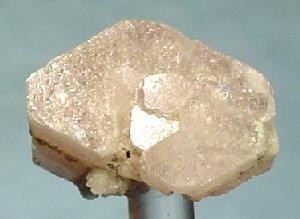Category Inosilicate Strunz classification 9.DN.05 Space group Cmca | Formula(repeating unit) LiNa(Zr,Ti,Hf)Si6O15 Crystal system Orthorhombic | |
 | ||
Crystal class Dipyramidal (mmm)H-M symbol: (2/m 2/m 2/m) | ||
The mineral zektzerite is a member of the tuhualite group and was first found in 1966 by Seattle mineralogist Benjamin Bartlett "Bart" Cannon. It was discovered in the Willow creek basin below Silver Star mountain in miarolitic cavities within the alkaline riebeckite granite phase of the Golden Horn batholith, Okanogan County, Washington. It is named for Jack Zektzer (born 1936), mathematician and mineral collector of Seattle, Washington.
Contents
The mineral was misidentified as alkali beryl (morganite) at that time. Subsequently, in September, 1975, additional specimens of the mineral were found in a float boulder on the north side of Kangaroo Ridge at an approximate elevation of 6500 feet; it was recognized that the material was not beryl.
Properties
Synthesis: by fusion of Li2CO3, Na2CO3, SiO2, ZrO2. The resulting material has a brilliant blue white fluorescence under short wave ultraviolet light.
Occurrence
Zektzerite is a mineral of agpaitic granites with arfvedsonite. It occurs with smoky quartz, microcline, okanoganite, sogdianite, astrophyllite, and zircon. It is found in cavities as euhedral crystals in the agpaitic-granite phase of the Golden Horn batholith, Okanogan County, Washington. It also occurs in blocks of pegmatite as rock-forming grains in a moraine of the Dara Pioz glacier in northern Tajikistan; in the Del Salto pluton in Aysén Province, Chile; Virikkollen, Haneholmveien, Sandefjord, Norway; as euhedral crystals and Ampasibitika, Ampasindava Peninsula, Madagascar. As gemmy crystals up to 3 cm from Mt. Malosa Malawi
